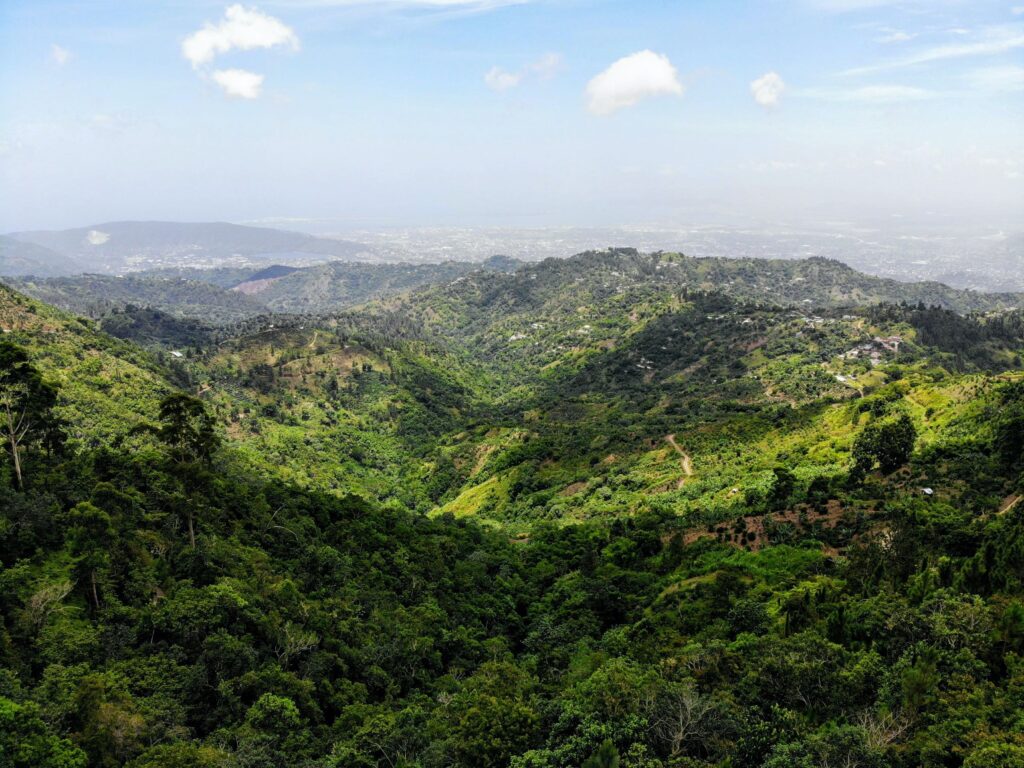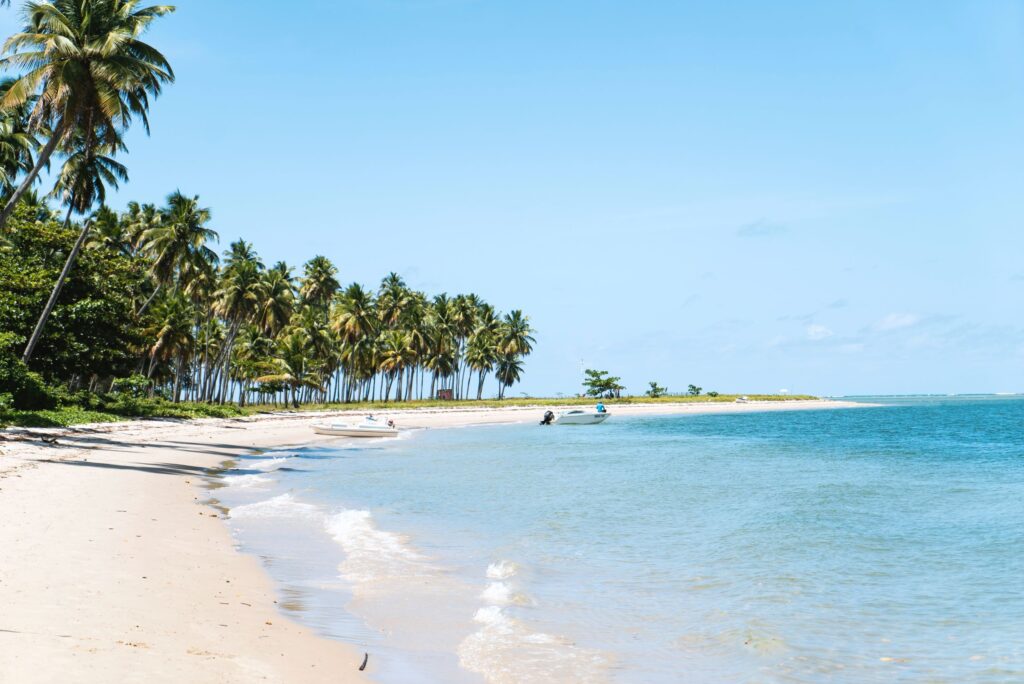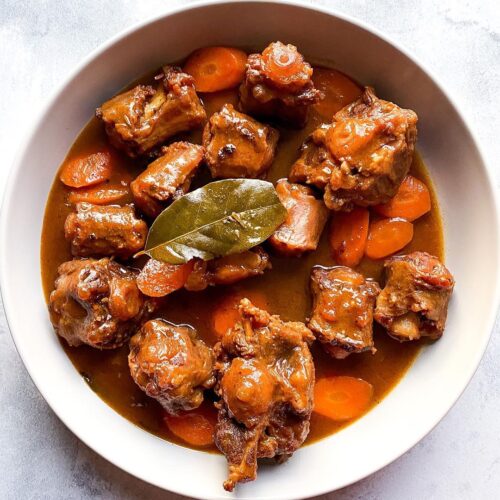About the Island
Jamaica is the third-largest island in the Caribbean Sea, about 90 miles south of Cuba. Jamaica’s size is comparable to the US state of Florida, with approximately 139,670 sq km, and just slightly smaller than Connecticut. The island’s geography includes coastal lowlands, a limestone plateau, and the Blue Mountains. Jamaica’s size and varied terrain allow for a diversity of growing conditions that produce a wide variety of crops. The northeastern part of Jamaica is one of the wettest spots on Earth with more than 100 inches of annual rainfall.

Jamaica features miles of white beaches and this makes it one of the most alluring Caribbean islands for tourists. Another popular attraction for vacationers is the island’s more than 800 caves, many of which were home to the earliest inhabitants.

The History of Food
Before Christopher Columbus landed in Jamaica in 1492, the original inhabitants of the island were the Arawaks, an Amerindian Tribe. They grew callaloo, a spinach-like leafy vegetable, papayas, and guava. They also produced two crops each per year of maize (corn), potatoes, peanuts, peppers, and beans. The Arawaks roasted seafood and meat on a grate suspended on four-forked sticks called a barbacoa, which is the origin of Western barbecue.
The Spanish invaded Jamaica, then called Xaymaca (“the land of wood and water”) in the late 1400s. They were responsible for importing many plants such as sugar cane, lemons, limes, and coconuts. They also imported pigs, cattle, and goats. The slaves who were shipped from the African west coast brought with them ackee (a tropical tree with edible fruit, now the national fruit of Jamaica), okra, and a variety of peas and beans.
Today, Jamaican cuisine is flavored with spices like ginger, nutmeg, and allspice (pimento). Allspice, the dried berries of the pimento plant, is native to Jamaica and an important export crop. Many meals are eaten with a toasted bread-like wafer made from cassava or yucca called bammy. With the warm waters of the Caribbean Sea surrounding the island, seafood is plentiful in the Jamaican diet. Lobster, shrimp, and fish such as red snapper, tuna, mackerel, and jackfish are in abundance.
Independence Celebrations
August 6th marks another year of celebrating the Independence of Jamaica from Britain. The period leading up to the day is crammed with activities and parties celebrating Jamaica’s independence. A festival is held to celebrate Jamaican Independence Day every year – the festival begins with the flag-raising ceremony to honor the achievements of Jamaica. The festival focuses on the creativity in Jamaica and their cultural awareness.

Many Jamaican’s celebrate the holiday by spending time with family and friends, cooking, and eating local dishes outdoors to enjoy the warm weather especially in gardens and on patios. Jamaican roadside vendors sell lots of food and drink that is usually eaten on the go for lunch. Fish tea (a broth), pepperpot soup, and roast yams with saltfish, to name a few. Ackee with saltfish is a popular snack sold at a stand, but the best-known snack is patties. Patties are flaky pastries filled with spicy minced meat, chicken, or seafood. Jamaicans, like other Caribbean islanders, celebrate their independence day with local rum, beer, and a variety of non-alcoholic drinks like refreshing fruit juices.
Jirie Caribbean invites you to celebrate Jamaican culture and cuisine in the comfort of your own kitchen. With the special touch of Jirie Caribbean Seasonings, nothing beats this classic oxtail stew. One of Jamaica’s local dishes.

Jamaican Stewed Oxtail
Ingredients
- 2 lbs oxtail
- 2 stalks celery medium chopped
- 1 medium onion
- 3 red garden peppers
- 2 cloves garlic
- 3 bay leaves
- 2 tbsp oregano chopped
- 1 tbsp fresh basil chopped
- 2 sprigs rosemary
- 2 medium carrots chopped
- 2 tbsp Jirie Jamaican Jerk Seasoning (mild or spicy)
- 1 tbsp Jirie All Caribbean Seasoning
- 1 cup red wine your preference
- 2 tbsp tomato paste
- 1 cup beef stock
- 1 cup water
- salt and pepper to taste
Instructions
- Season the oxtail generously with salt. In a large heavy pot set over high heat, sear the oxtail on both sides until medium brown in batches.
- Remove and set aside. Add the onions, celery, peppers to the same pot used for searing and saute vegetables in the rendered fat until golden and slightly softened.
- Add the garlic and herbs and sauté for another minute.
- Add the red wine and allow to reduce slightly.
- Add tomato paste, dried seasoning, and the sear oxtail to the pot.
- Pour in the stock, water just enough to cover the oxtail. Reserve the rest. Season with salt and pepper.
- Bring up to a boil then reduce the heat, cover and simmer gently for 2-3 hours. Check every 45 minutes if the oxtail needs more stock and top up as needed.
- Serve hot with your favorite side dish.


1 Comment